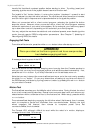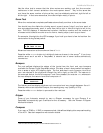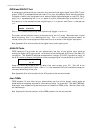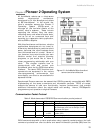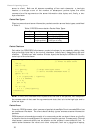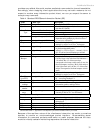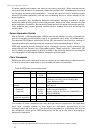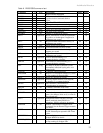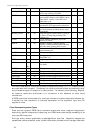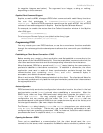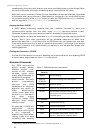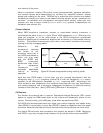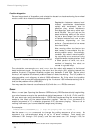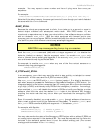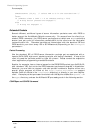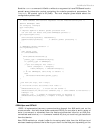
Pioneer 2 Operating System
IOREQUEST 40 none Request 1 or a continuous stream (>1) or
tell to stop sending (0) IO SIPs
– 1.E
PTUPOS 41 int msb is the port number (1-4) and lsb is the
pulse width in 100µsec units PSOS, 10µsec
units P2OS. Version 1.J uses RC-servo
40ms duty cycle.
4.5 1.2
-
1.J
TTY2 42 string Send string argument to serial device
connected to AUX port on microcontroller
4.2 1.0
GETAUX 43 int Request to retrieve 1-200 bytes from the
aux serial channel; 0 flushes the aux serial
input buffer.
–
1.4
BUMP_STALL 44 int Stop and register a stall if front (1), rear (2)
or either (3) bump-ring contacted. Off
(default) is 0.
– 1.5
TCM2 45 int TCM2 Module commands; see TCM2
Manual for details.
– 1.6
DOCK 46 int Default is 0=OFF; 1=enable docking
signals; 2=enable docking signals and stop
the robot when docking power sensed.
–
1.C
JOYDRIVE 47 int Default is O=OFF; 1=allow joystick drive
from hardware port
– 1.G
E_STOP 55 none Emergency stop, overrides deceleration – 1.8
E_STALL 56 int Emergency stop button causes stall on
PeopleBot only
– 1.E
STEP 64 none Single-step mode (simulator only) 3.x 1.0
ARM 70
–
80
–
Please consult the Pioneer 2 Arm Manual
for details.
–
1.H
ROTKP 82 int Change rotation’s proportional drive factor – 1.J
ROTKV 83 int Change rotation’s differential drive factor – 1.J
ROTKI 84 int Change rotation’s integral drive factor – 1.J
TRANSKP 85 int Change translation proportional drive factor –
TRANSKV 86 int Change translation differential drive factor –
TRANSKI 87 int Change translation integral drive factor –
PLAYLIST 90 int Must be 0; request AmigoBot sound playlist – 1.E
The client must send a command packet at least once every watchdog (default is two)
seconds (see next chapter). Otherwise, the robot’s onboard drives automatically stop,
but will resume again on receipt of a client packet. To maintain the watchdog, Saphira,
for instance, sends the action-less PULSE command in the absence of other client
commands.
A P2OS command is comprised of a one-byte command number optionally followed by,
if required by the command, a one-byte description of the argument type and the
argument value.
Client Command Argument Types
There are four types of P2OS client command arguments: none, unsigned integers two
bytes long, signed integers two bytes long, and NULL-terminated strings consisting of as
many as 196 characters.
The byte order, where applicable, is least-significant byte first. Negative integers are
transmitted as their absolute value (unlike information packets, which use sign extension
34



